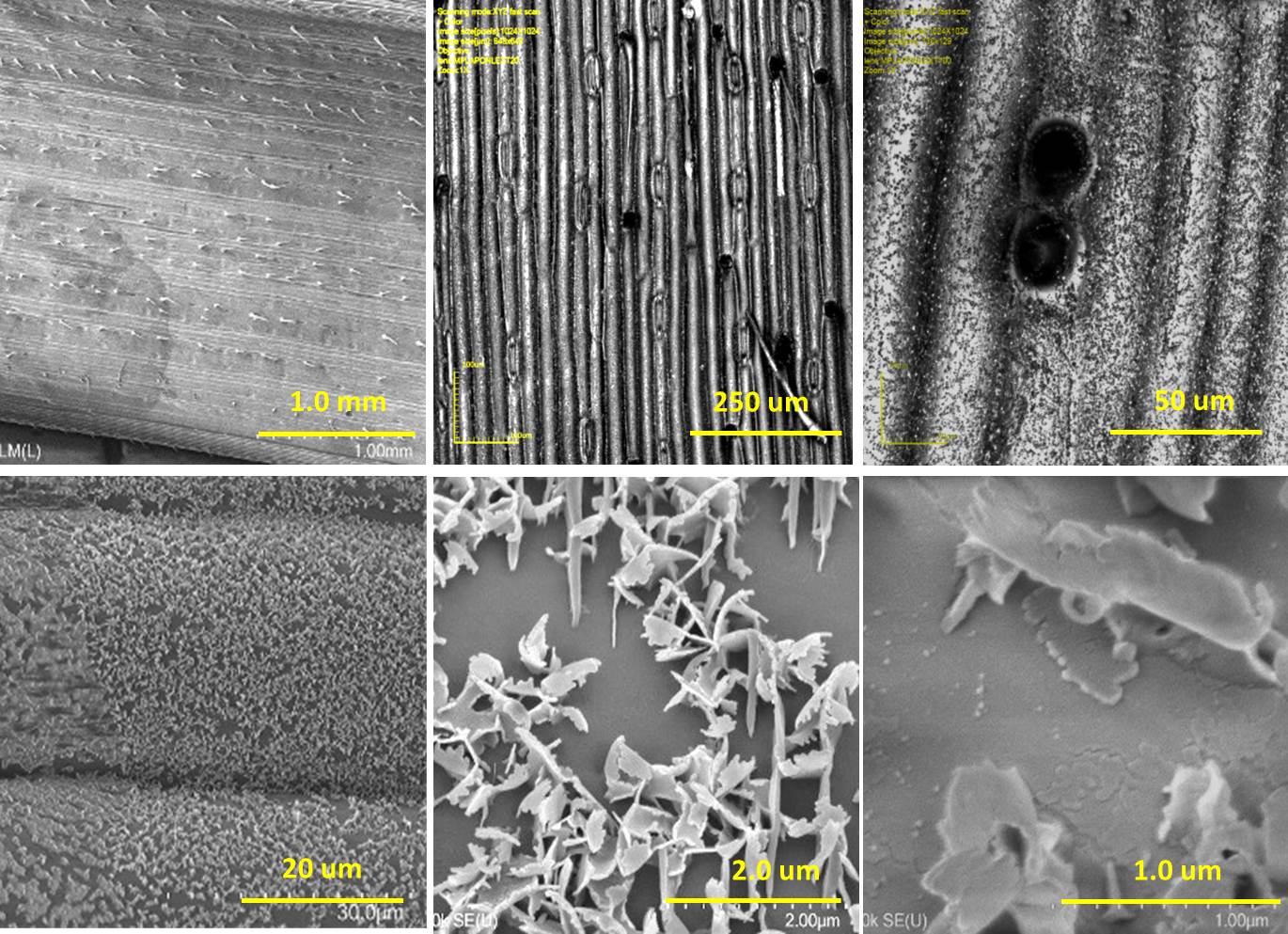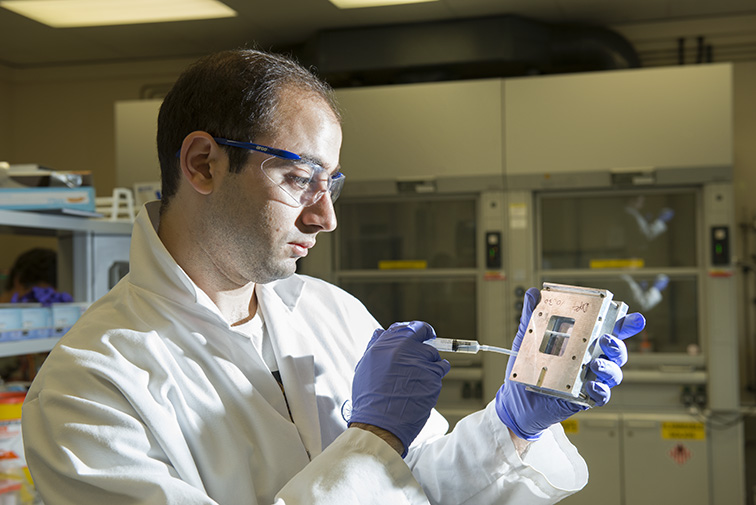They are now using the model at ISIS to study how surfactants, a key component in pesticide formulations, interact with the leaf surface to get into the plant and take effect. The results could lead to the fine-tuning of pesticide formulations to further increase crop yields in an attempt to meet the demand of feeding an ever growing global population.
Waxy cuticles are essential for the well-being of all plants. The cuticle, made up of a thin coating of wax on plant leaves, acts as a protective shield against attack from pests, prevents the loss of nutrients and water from the plant, and is involved in transporting water and nutrients across the plant surface for plant growth.
To add an additional layer of protection against pests, farmers use pesticides on their crops in an attempt to maximize their yields. However, the structure of wax cuticles and the route pesticides take to cross the wax barrier and get inside are not fully understood.
For the first time, scientists from the University of Manchester have used extracted leaf waxes to recreate the wax shield found on plants like wheat and barley. The results have been published in the Royal Society journal, Interface.
The team are now using neutron reflectometry on INTER to study how surfactants from pesticide formulations modify the wax cuticle model to cross the barrier into the leaf.
Lead author of the study, Elias Pambou from the University of Manchester said: “By understanding how surfactants in pesticides interact with the plant you can fine-tune the ingredients of the pesticide to not only further increase crop yield but take away some potential negative side effects, including the removal of some of the waxes which leaves the plant susceptible to other sorts of diseases and attack from bacteria and microbes. This opens the door to crop-safe formulations which will reversibly interact with the plant waxes.”
“We’re finding out important information about how plants operate which is something we previously did not have the tools to study”.

Microscopic images of the adaxial (top) surface of a 2 week old wheat leaf. Credit: Elias Pambou, University of Manchester, Dr Gordon Bell and Dr Jill Foundling, Syngenta
View full-size image
To make the model of the leaf surface, scientists first extracted real plant wax from barley and wheat leaves. This was made possible by a new technique, developed in the Green Chemistry Department at the University of York, called supercritical carbon dioxide extraction. In the process, scientists dissolve the wax off the surface of the leaf using a carbon dioxide solvent under its supercritical condition at a very high temperature and pressure. When the pressure and temperature is reduced, the carbon dioxide evaporates, leaving behind the wax.
The team from the University of Manchester then took the extracted wax and spin coated it onto a flat a silicon support in order to model the leaf surface. Imaging techniques allowed the team to see that the wax model was very similar to the structure of the wax on a real leaf, meaning the model could be used to realistically study how pesticides cross the wax barrier to get into the plant.
Using neutron reflectometry on INTER, the team were able to characterize the wax model and they found that the wax was made up of a thin underlying film covered by large crystalline structures.

Lead author, Elias Pambou, University of Manchester, preparing samples in the laboratory at ISIS. Credit: STFC
View full-size image
Elias Pambou added: “Neutron reflectometry is so effective because not only can we look at the thickness of the wax films but also the change in density over the thickness range. We’re able to look at the amount of water penetrating into the leaf at the surface of the wax compared to the bottom of the wax closest to the epicuticular plant cells. That could give us a lot of information regarding how the water is diffusing through the plant.”
The project is being supported by the agrochemical company, Syngenta. Dr Gordon Bell, a senior scientist at Syngenta said: “This research has furthered our understanding of the kinetics of plant uptake. It has shown that water can penetrate into leaf wax. This simple observation explains a lot of the basic science behind pesticide uptake into plants.”
Julian Gold, Farm Manager of the nearby Hendred Estate added: “We are currently facing multiple challenges on the pesticide front as there are increasing levels of resistance developing in weeds, pests and diseases as well as a reducing pesticide armoury due to tighter conditions being imposed for registration of products. Any research that can improve the efficacy of products through a better understanding of the way that diseases and pesticides penetrate the waxy layer on leaf surfaces should be incredibly useful”.
Emily Mobley
Elias Pambou et al.
The published paper can be found here.
Pambou, E. et al., 2016. Structural features of reconstituted wheat wax films. Journal of the Royal Society, Interface. 13 (120).
DOI: 10.1098/rsif.2016.0396
This study featured in Farmers Weekly.
